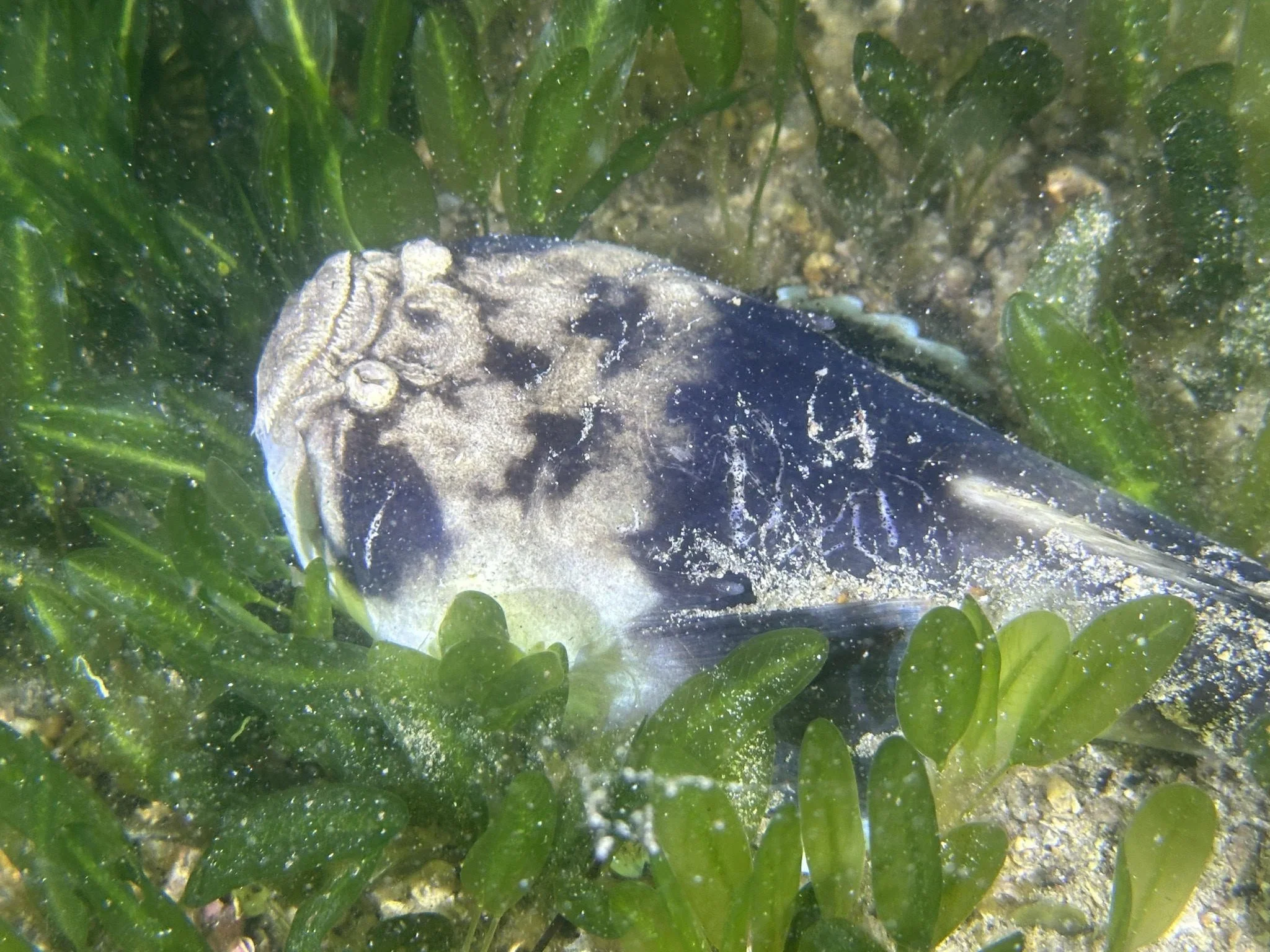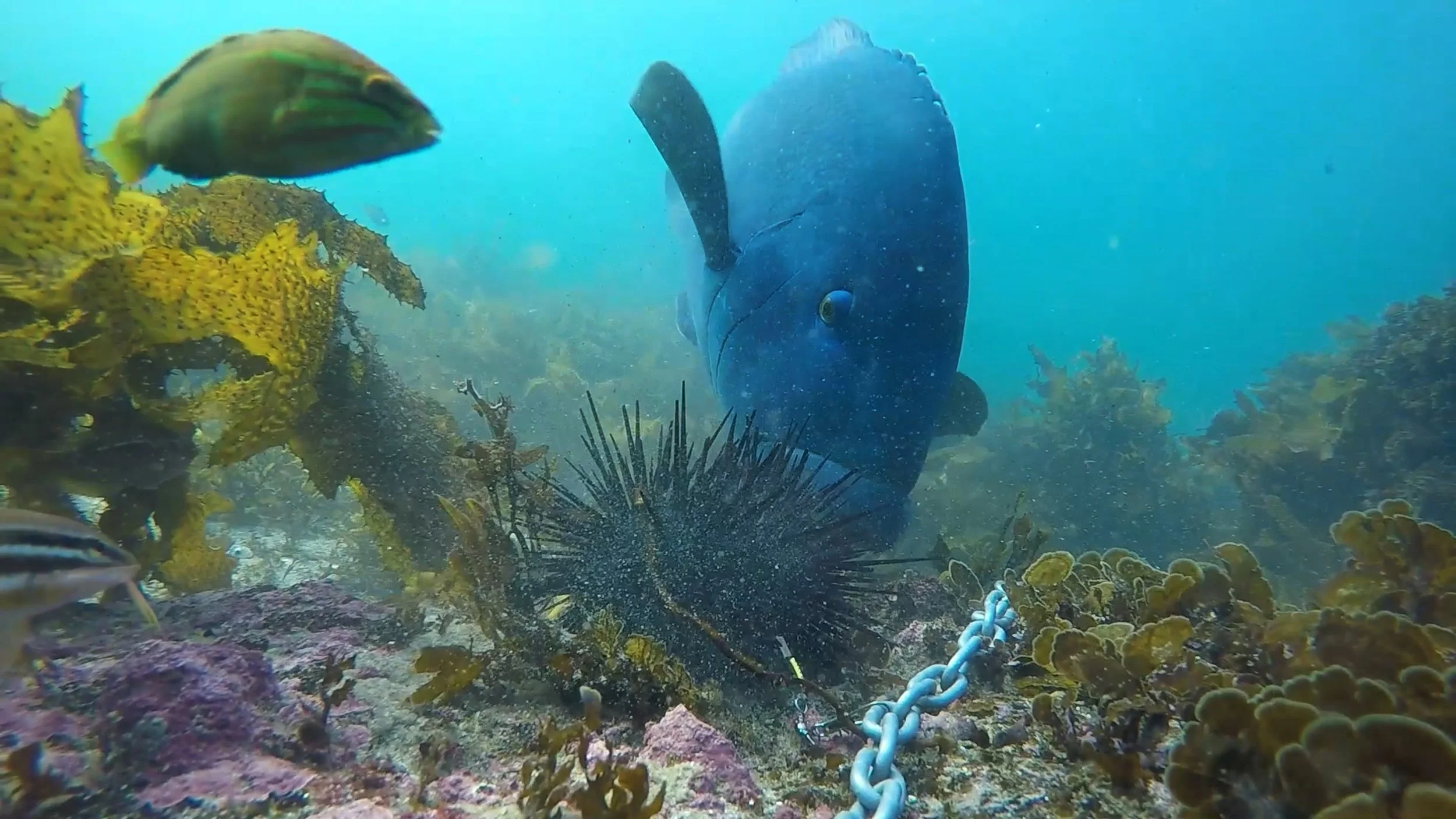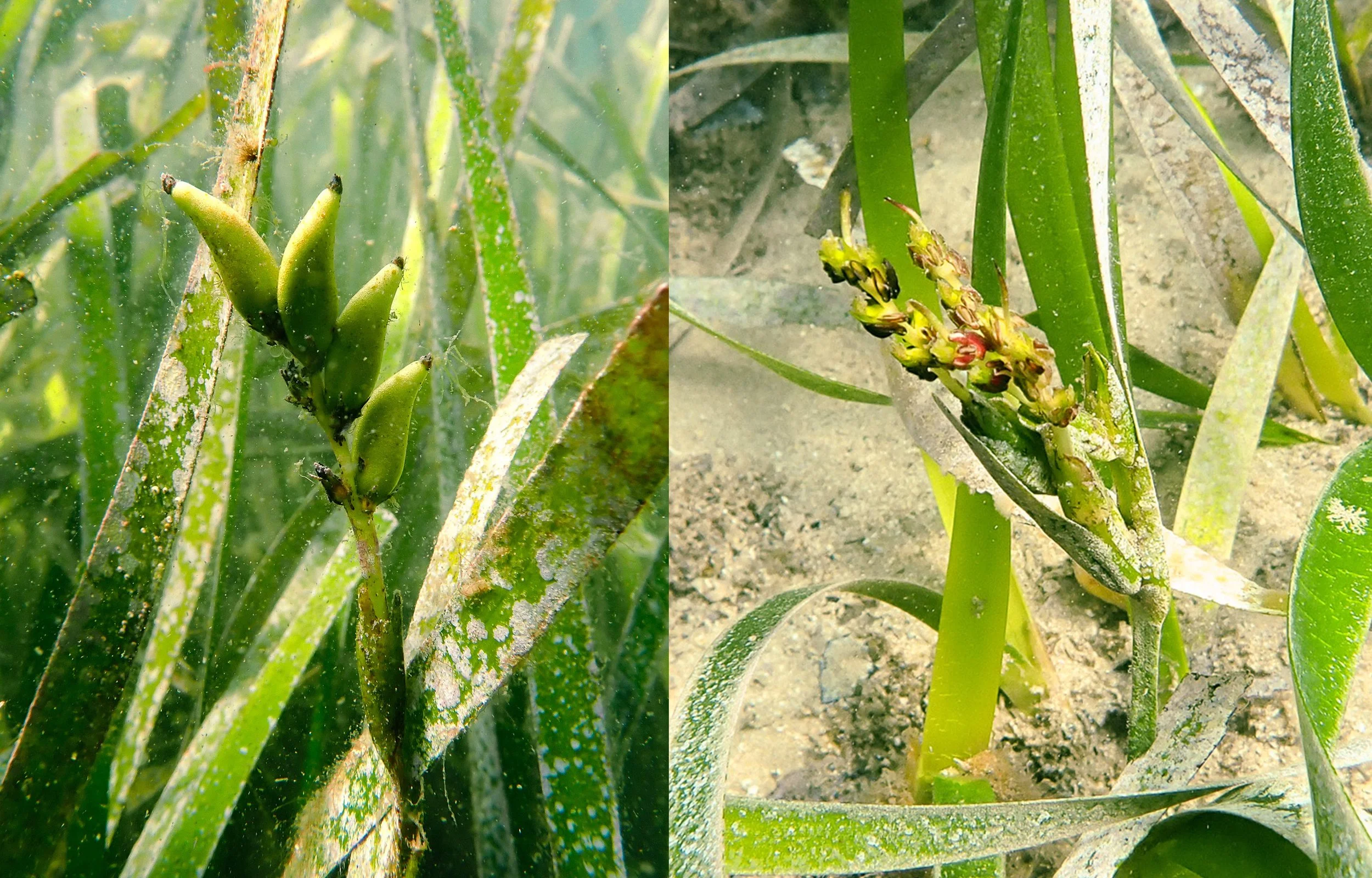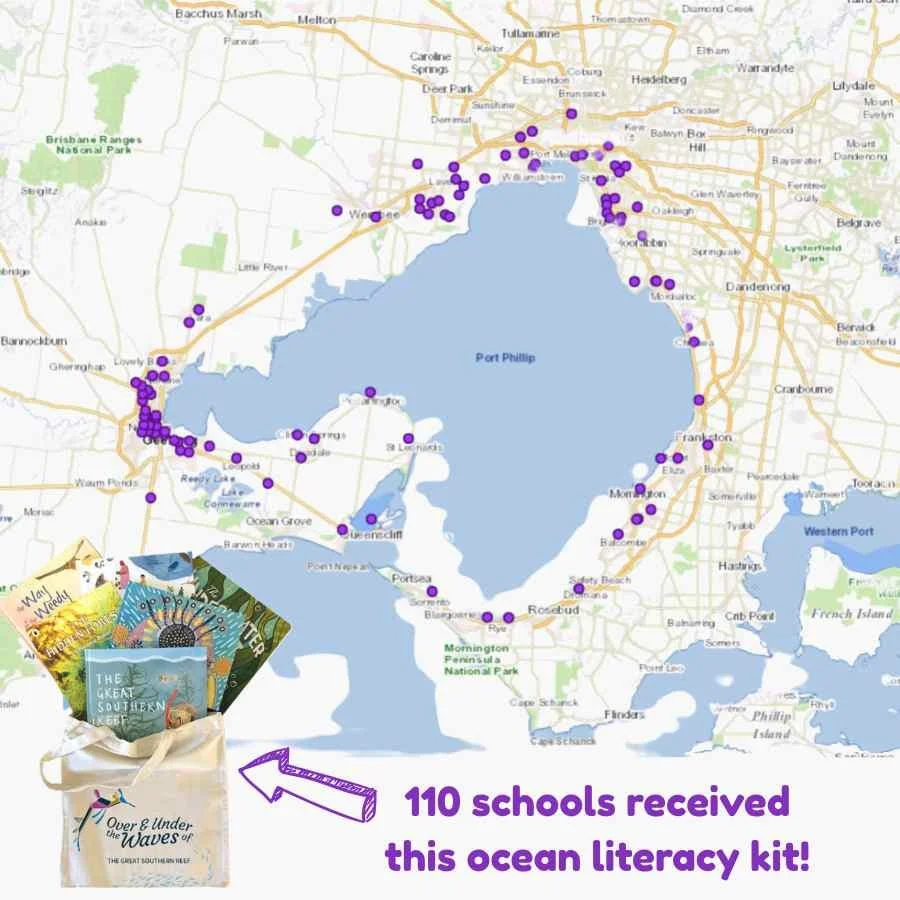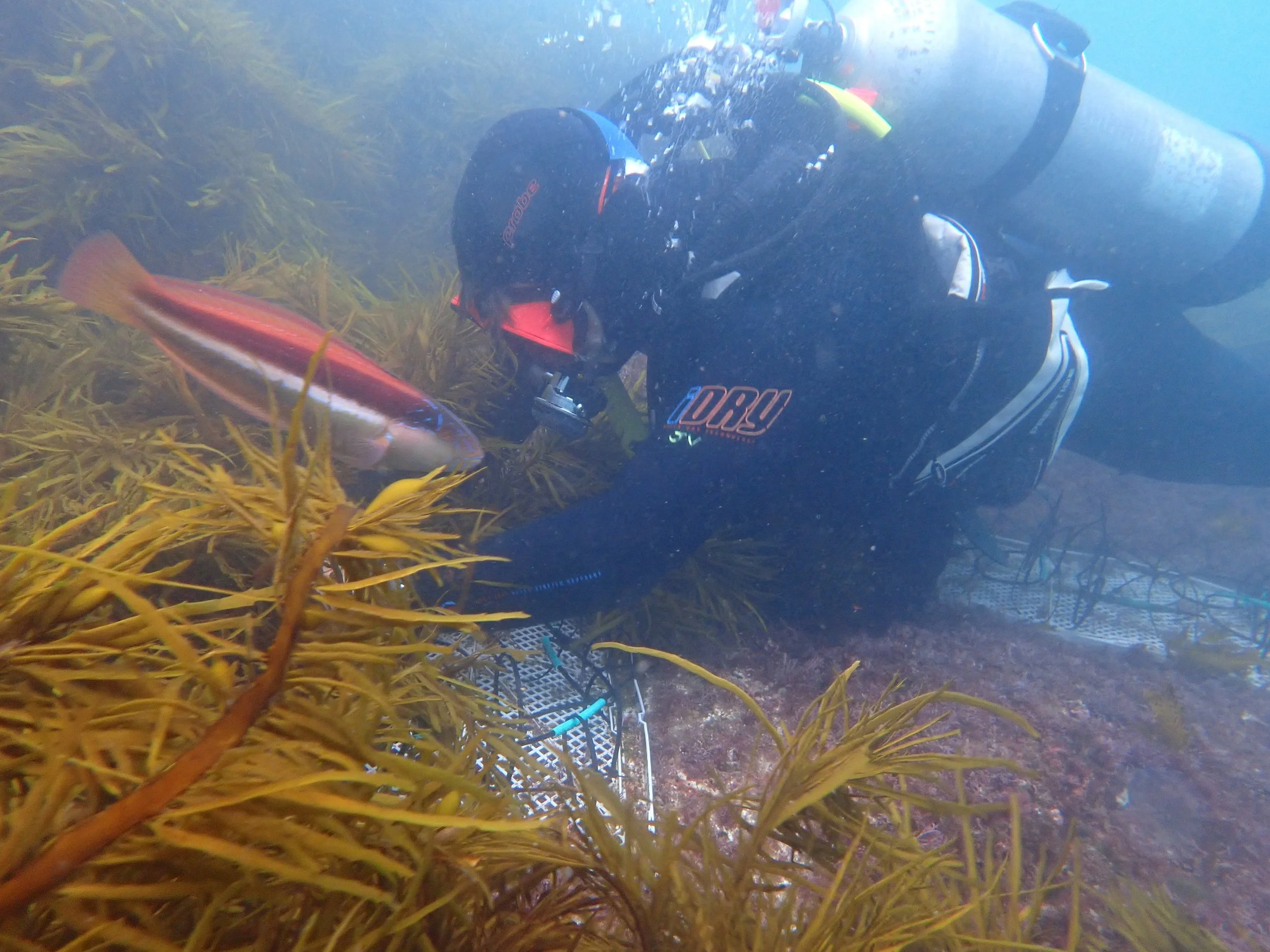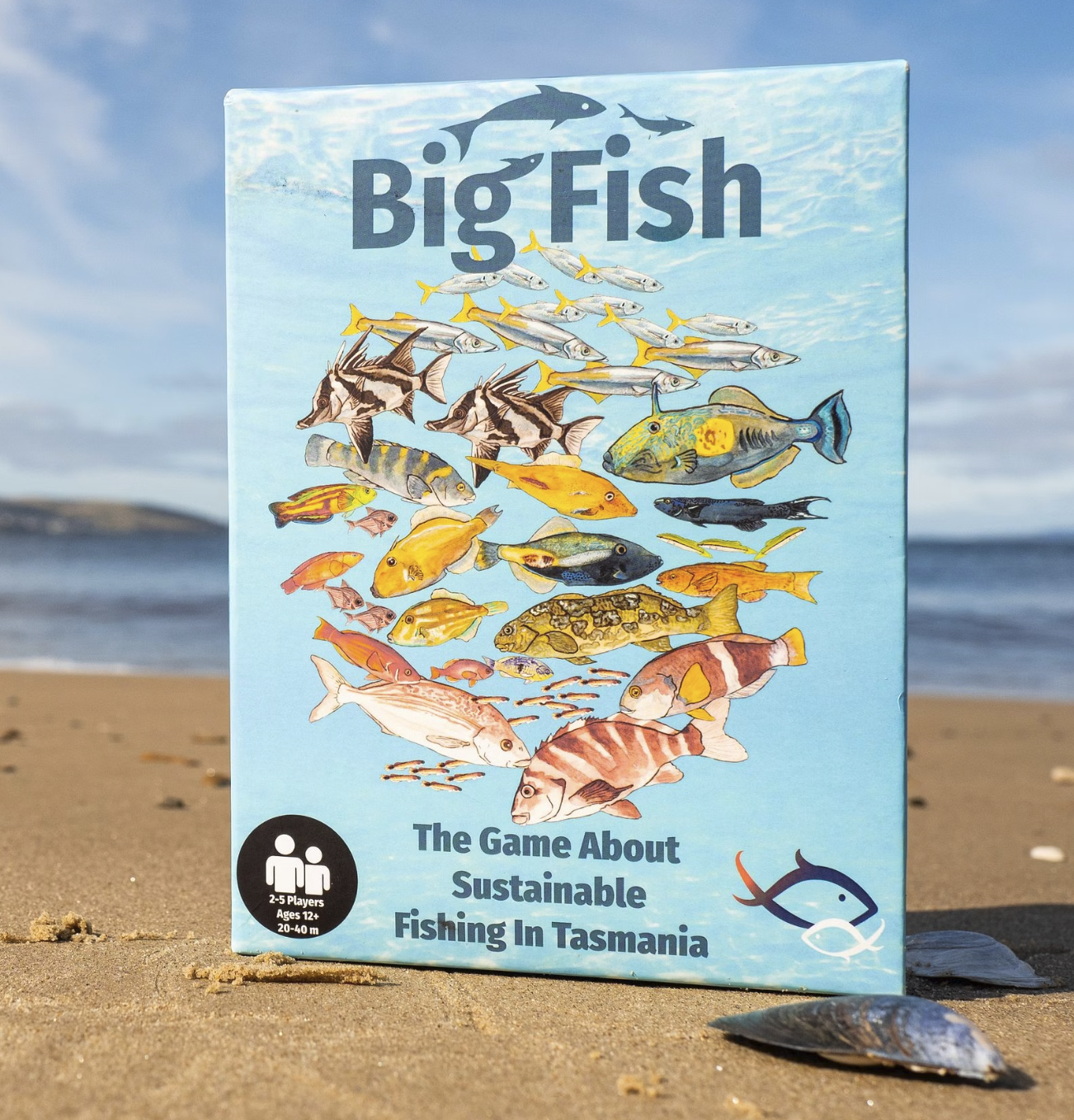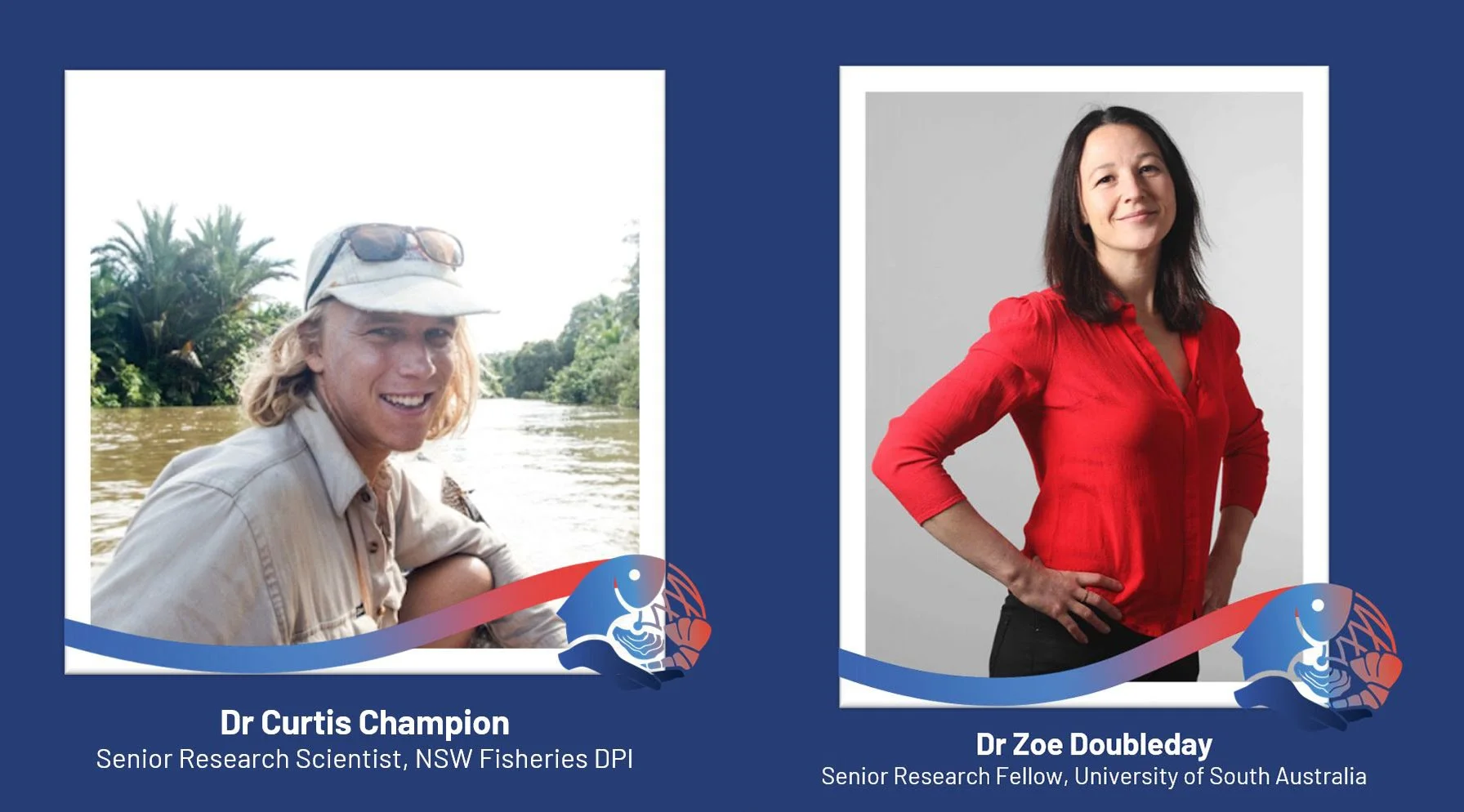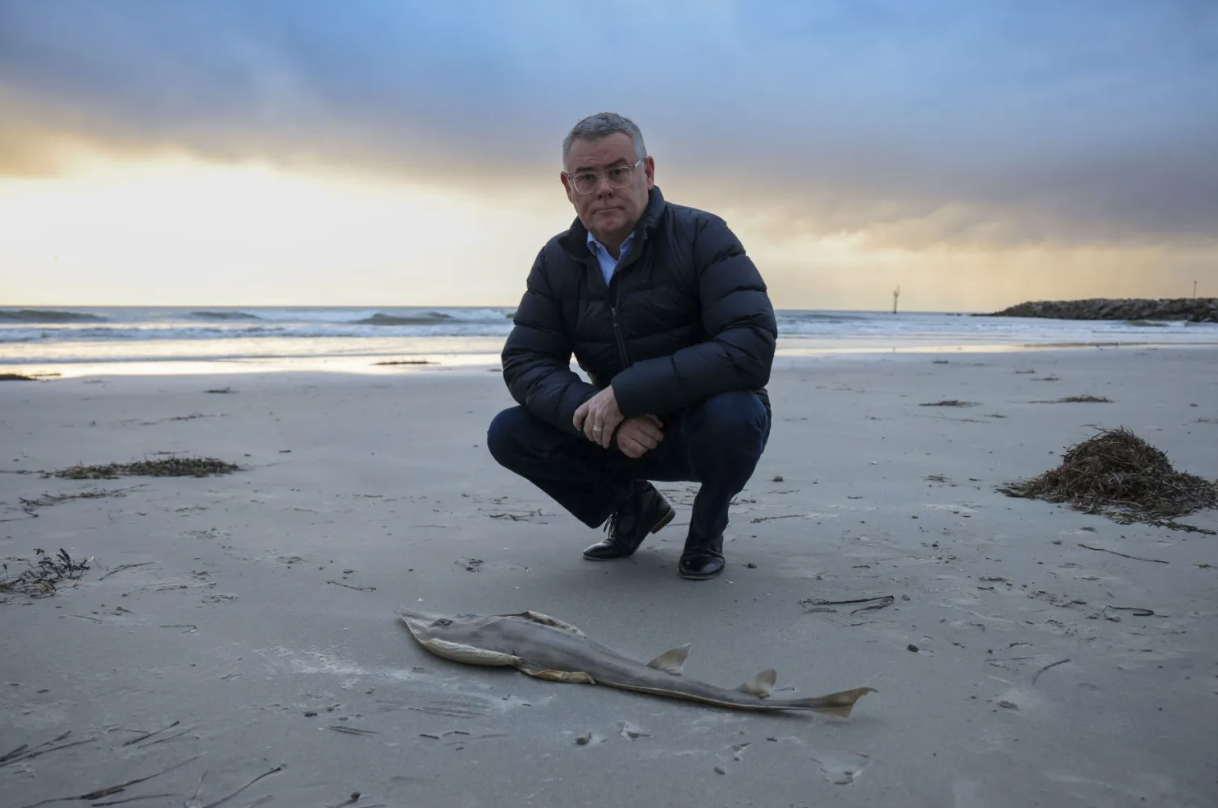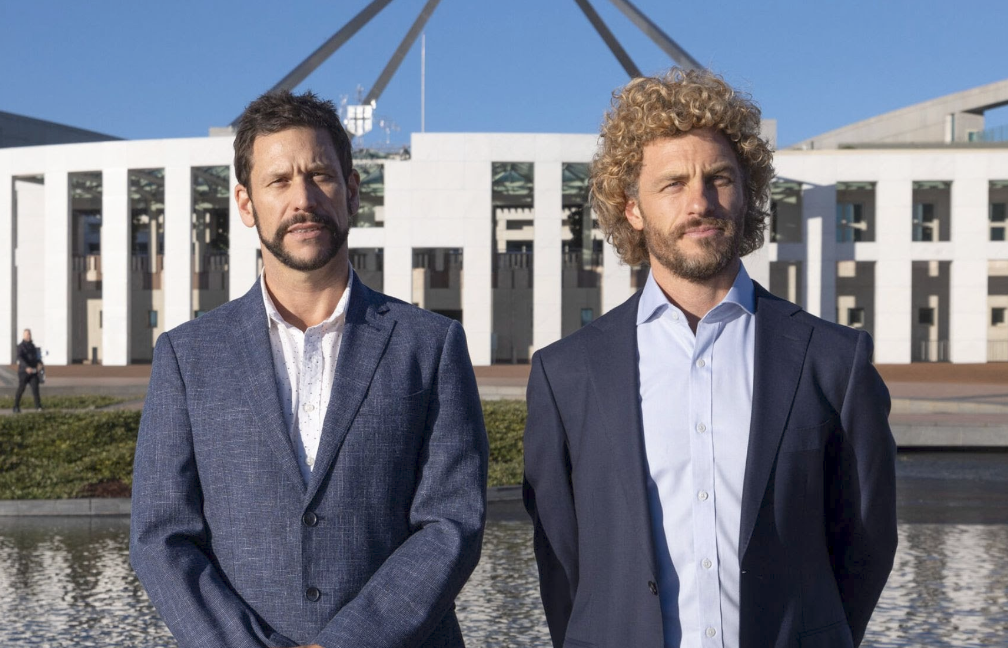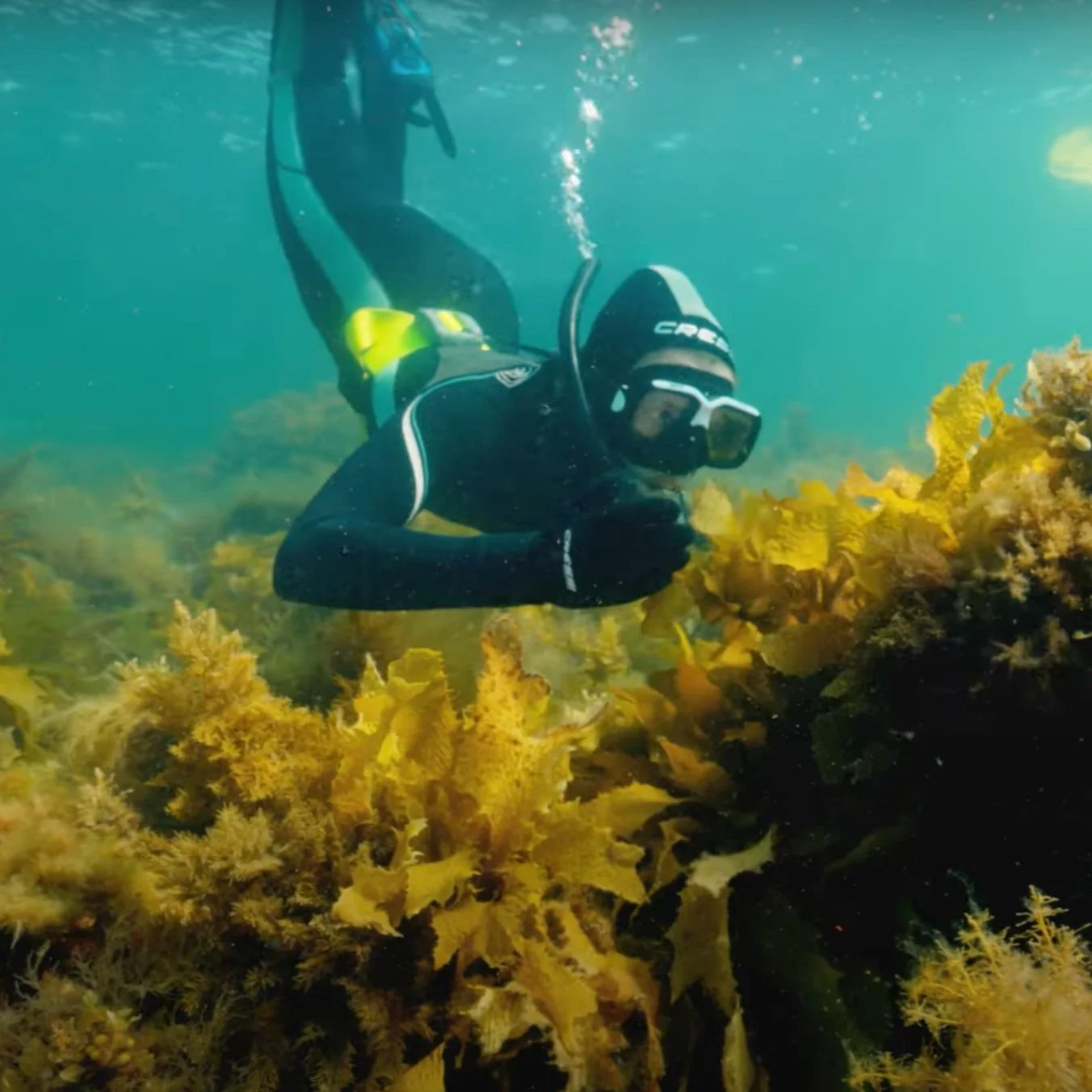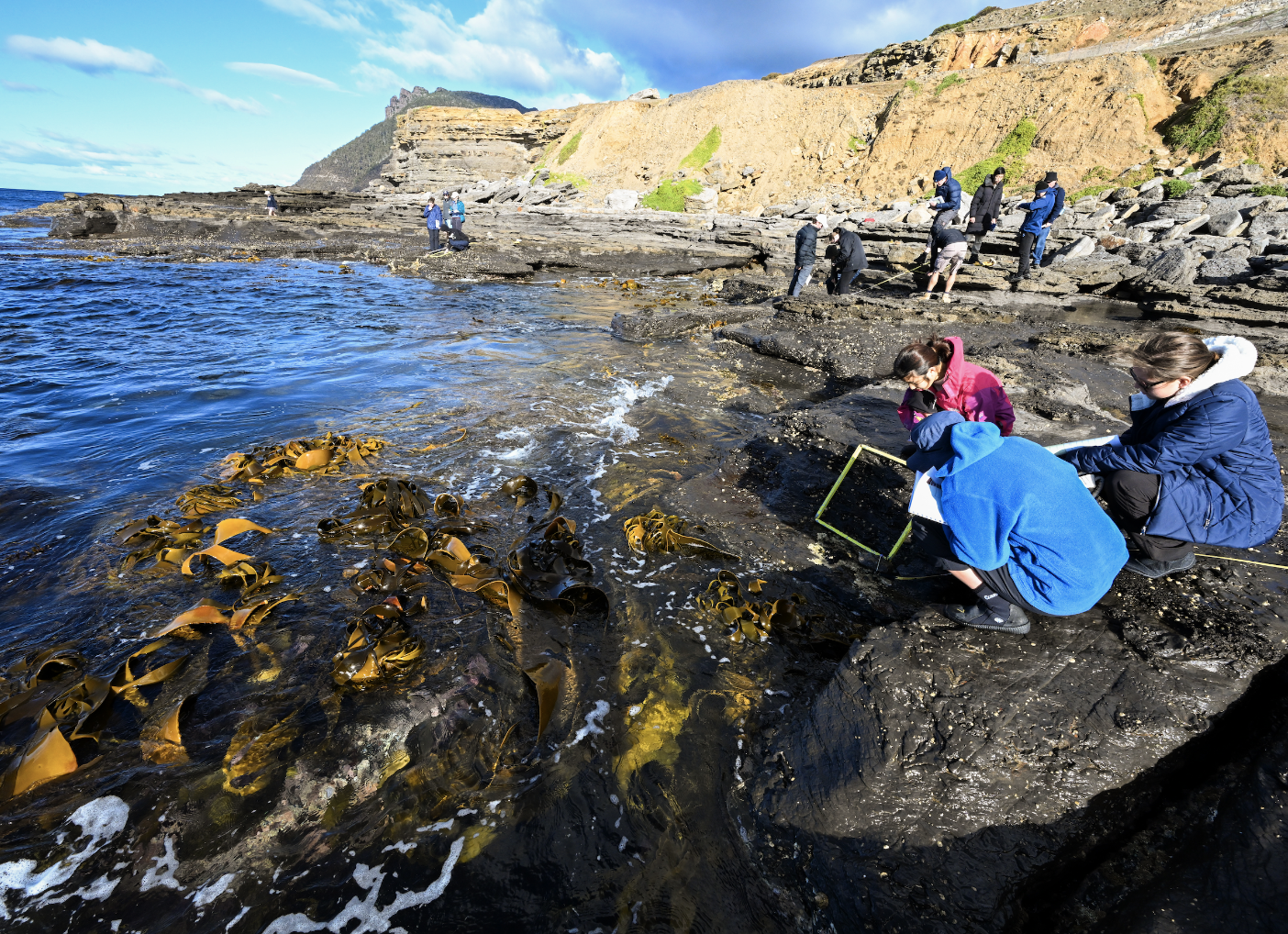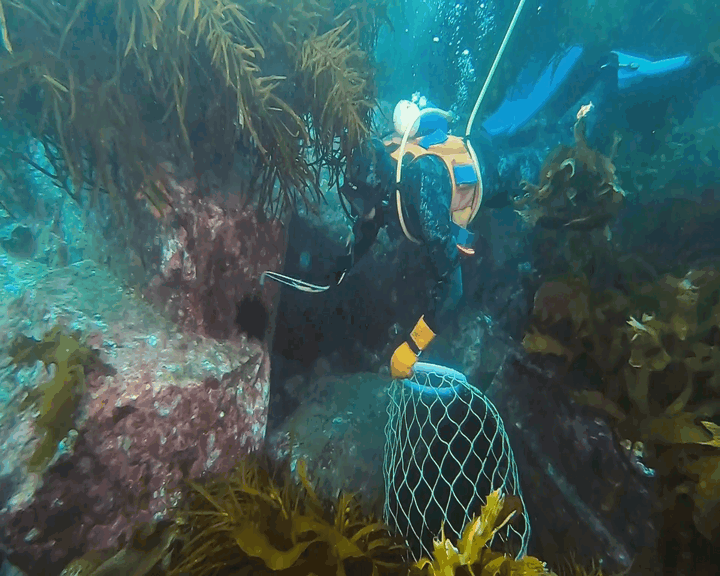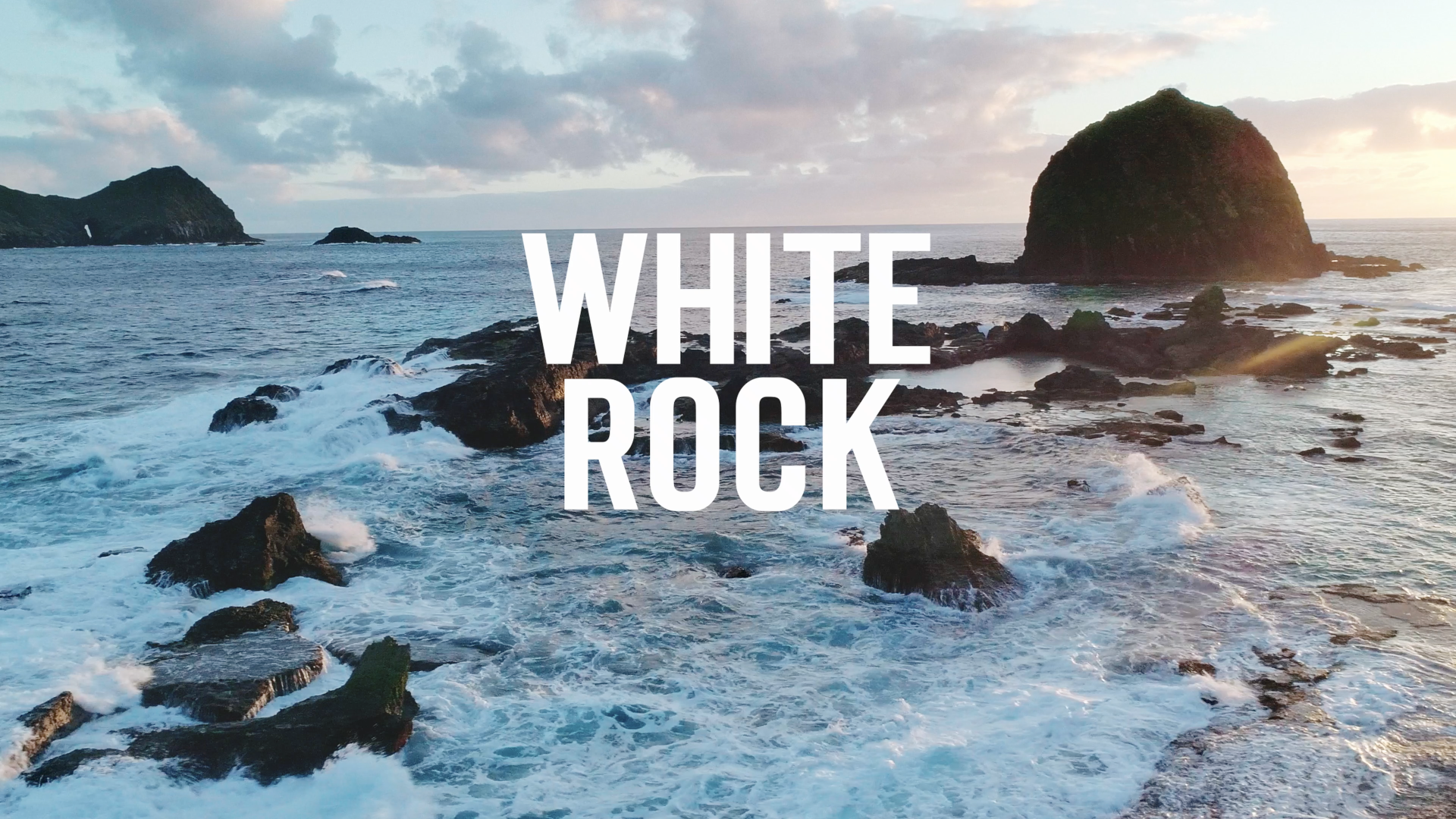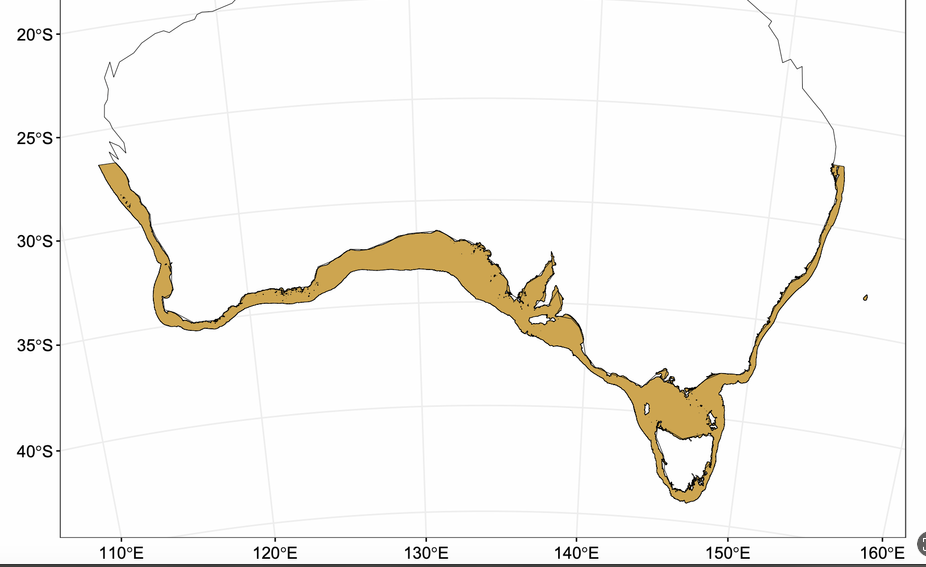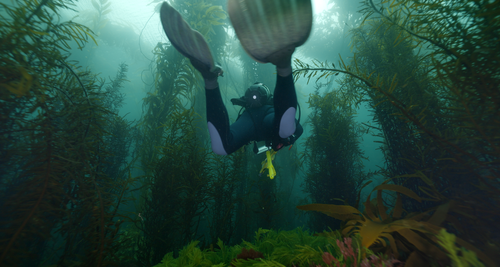
OCTOBER 2025
Welcome to the October edition of the Great Southern Reef newsletter. This month features new research from across the GSR, an update on South Australia’s ongoing algal bloom, fresh citizen science opportunities, and two new ocean-themed card games designed to spark curiosity and learning, plus a whole heap more.
SA's Harmful Algal Bloom - Spring Situation
In this new update by Marine Ecologist and Educator Janine Baker, we revisit South Australia’s ongoing harmful algal bloom (HAB) event that has persisted into mid-spring across parts of the State.
Since earlier updates in April and July, metropolitan Gulf St Vincent, parts of Yorke Peninsula, and western Spencer Gulf remain affected, while severely impacted areas such as southern Yorke Peninsula, Kangaroo Island, and the Encounter Coast that were severely impacted in autumn, are now heading towards the long, uncertain and largely undocumented process of recovery.
Image: Stargazer at Edithburgh by Troy JohnsonSize Matters: Predators and Urchins on NSW Reefs
New research from UNSW and the University of Tasmania reveals how predator size and diversity shape urchin control on New South Wales reefs. Led by Jessica Nguyen, the study found large male eastern blue gropers dominate urchin predation, while reefs with a richer mix of predator species see faster urchin removal.
Image (below): A large male eastern blue groper feeding on a tethered longspined urchin during the experiment. Read our feature on Jess' research and what it reveals about the delicate balance between predators, urchins, and kelp.
“I expected the eastern blue groper to eat urchins, but I didn’t anticipate it would dominate predation so clearly.”
White Rock at NSW Parliament
White Rock will be screened at the NSW Parliament next Wednesday, 15 October. Following the film, guest speakers will lead a discussion on the ecological and cultural emergency facing NSW Sea Country, the need for funding to support urchin removal, kelp restoration and long-term monitoring, and the importance of a NSW Indigenous Sea Country Partnership led by First Nations.
As part of our ongoing impact campaign screenings continue to roll out across the country. If you or your organisation would like to host a screening, you can register your interest here:
Scalable Solution for Giant Kelp Restoration
IMAS scientists have developed a scalable method to reseed giant kelp forests that have collapsed by up to 95% along eastern Tasmania.
The new holdfast-"graft" technique takes hatchery-reared juvenile kelp grown on twine and binds them directly into the holdfast stubs of other seaweeds. By giving the young kelp a stable anchor, survival and attachment rates were up to 40 times higher than twine tied to bare rock or seeded gravel approaches.
The method can now be deployed in under a minute per holdfast by trained divers. Within 9 months, the grafted kelp developed reproductive fronds. By 12 months, new self-recruitment was seen around restored patches, a sign of self-sustaining forest recovery.
Teams of scientists, commercial fishers, and recreational divers are now reseeding hectare-scale kelp forests across multiple sites in Tasmania using this approach. In our short film Reviving Giants, we captured this method underwater, showing how innovation and hands-on restoration can give these threatened underwater forests a future.
Image: The method showing seeded twine wrapped around the base of the holdfast and M. pyrifera overgrowth of the holdfast stub. Citizen Science for Seagrass Recovery
Seeds of the Sea is a new citizen science project focused on the flowering and fruiting of Posidonia australis, a long-lived seagrass that underpins healthy coastal ecosystems across the Great Southern Reef, from Shark Bay in WA to NSW. These meadows stabilise shorelines, store carbon, and provide habitat for species like White Seahorses, Little Penguins, and Blue Swimmer Crabs.
Image (below): Posidonia australis fruit and flowerCommunity members, divers, Indigenous Rangers, and scientists are working together to document reproductive events that remain poorly understood, especially in NSW where losses have been severe. Anyone across the Great Southern Reef can contribute sightings and images, helping build the knowledge needed to guide future restoration.
You can learn how to spot flowering seagrass and report your sightings at seedsofthesea.org.
110 Ocean Literacy Kits Delivered to Victorian Schools
A recent project funded by the Port Phillip Bay Fund (DEECA) delivered ocean literacy education kits to 110 primary schools across the Bay. The updated teacher’s guide includes new activities and embeds Traditional Ecological Knowledge, supported by picture books featuring local marine life.
To build on this, 21 school incursions were run to engage students directly with their marine environment. Feedback from teachers has been very positive, with resources described as engaging, relevant, and curriculum-aligned.
Beneath the Kelp Canopies of Jurien Bay
From the mighty Turbo jourdani, the largest endemic turban snail in the southwest, to eye-catching slugs Jurien Bay’s reefs are home to a diverse array of invertebrate life, hidden beneath seaweed canopies.
Image (below): Octopus djinda by Dr Inês Leal (DBCA)Spend a little time here and you start to realise these reefs aren’t just rich in species, they’re full of stories waiting to be shared. In this new article by Dr Inês Leal of DBCA, you’ll meet some of the creatures that live within the seaweed forests, the people helping to study them, and how you can play a part too.
Survey Highlights Trust in Science, Warns Polarisation a Barrier
A new CSIRO survey of more than 900 Tasmanians shows that people overwhelmingly value the coast for its natural beauty and conservation, yet almost 70% are worried about how quickly change is happening and many feel they have little influence over government or industry decisions.
The survey highlights ocean warming, plastic waste, and biosecurity threats as the biggest concerns. It also shows strong support for more restoration work, biosecurity investment, and marine spatial planning, with scientists ranked as the most trusted sources of information.
“Polarisation of community attitudes is hindering our ability to address many critical marine and coastal issues. This research assists policymakers and industry to better understand stakeholder attitudes and perspectives, identify potential social risks, and anticipate future trends. ”
This is the first stage of CSIRO’s work on low-conflict pathways for Tasmania’s marine industries, underscoring both the deep connection Tasmanians have with the sea and the urgent need to address the pressures it faces.
PhD Spotlight - Tom Mayo
Tom Mayo has just begun a PhD at the University of Tasmania after moving from South Australia, where he studied at Flinders and Adelaide Universities. Growing up along the Great Southern Reef sparked a fascination with its marine life that has grown into a passion for understanding how best to protect it.
“The aim of my research is to see how marine protected areas can support healthy reefs and thriving communities, helping shape effective conservation across the Great Southern Reef.”
His research focuses on how marine protected areas influence both ecosystems and communities. Using long-term ecological data from Reef Life Survey and the Australian Temperate Reef Collaboration, alongside conversations with local communities, Tom is examining the dual impacts of protection on nature and people.
Expanding Underwater Forests in Sydney This Winter
This winter has been a big one for Operation Crayweed, as the project continues restoring lost crayweed forests along Sydney’s coastline. The team established three new restoration sites which join five active restoration locations from previous years, such as Maroubra, and Dee Why, which were also topped up this winter, creating a growing network of transplanted crayweed patches along the city’s coastline.
Spring will see divers return for detailed monitoring, but early signs are very promising. Sites planted last year are still flourishing, with new “craybies” (baby crayweed) establishing themselves naturally in good numbers at most of the planted sites. This winter’s transplants will strengthen those populations and help speed up the return of self-sustaining crayweed forests.
Image (below): Crayweed bags’ trialled at Coogee allow planting in previously inaccessible shallow reefs.The team will be back in the water soonn to monitor how the new ‘crayweed bags’ perform. Community members can learn more about the project and meet the team at an upcoming event on 5 December at Freshwater Beach, part of the Manly Ocean Festival. Follow Operation Crayweed on Instagram for updates.
Redmap NSW Playing Cards are Here!
Get ready to shuffle, deal, and explore with the brand new Redmap Marine Match NSW playing cards. Following the success of the Tasmanian edition, this 2025 deck brings the ocean into your hands in a fun and educational way.
Each pack highlights 14 beautifully illustrated marine species from the NSW coast. From the iconic blue groper and little penguin to golden kelp, which forms essential habitat. The deck was developed by the MEMS Climate Change Citizen Science Project in collaboration with Redmap Australia, helping you engage with local biodiversity while sparking conversations about how climate change is reshaping our Great Southern Reef.
The cards are already being used by schools, libraries, and community groups across NSW. A limited number are now available through the NSW Marine Estate Education Strategy and at events promoting the work of the NSW Marine Estate Management Strategy and NSW DPIRD Fisheries and Forestry. For those outside NSW, keep an eye on Redmap Australia channels for updates on how to get a deck.
"Big Fish" Card Game
After a highly successful crowdfunding campaign, the Big Fish card game is finally here. Created by marine scientists and artists, the game brings the challenge of sustainable fishing to your table, balancing catch, conservation and chaos in every round.
Perfect for classrooms or game nights, every move means balancing catch, conservation, and competition to keep your fishing spot thriving. Get your copy today.
The Sea Change Australia Expert Network is Growing!
Since launching in July, the Sea Change Australia Expert Network has grown to almost 60 members. Together they’ve already answered more than 26 questions on the Fishing for Climate Answers platform, helping the seafood sector access practical, trusted advice on climate change. Questions cover everything from regional impacts to adapting operations and understanding species shifts.
The network brings together climate and fisheries researchers, government managers, Indigenous Knowledge holders, industry leaders, and practitioners with deep local knowledge. Experts are profiled on the Sea Change website and gain visibility across the sector while supporting fishers, aquaculture producers, and communities. If you’d like to join or explore the network click here.
Feature Creator - Vera Möller
Originally trained as a microbiologist, German born Vera Möller now lives just metres from the Mushroom Reef Marine Sanctuary in southern Victoria. Her art evolves from field observation, marine immersion, and speculative forms, drawing inspiration from the Great Southern Reef’s rich marine life and habitats.
Through translucent layers, pouring techniques, and hybrid organisms, she evokes underwater movement, light, fragility, and mystery. Read Vera’s full profile to explore her journey and work.
Image (above): Artwork detail by Fi StoreyThanks for reading all this way and for your ongoing support of the Great Southern Reef Foundation. Your contributions help power our outreach, education, and advocacy work across Australia. We’re also pleased to share that the Foundation now holds Deductible Gift Recipient (DGR) status, meaning all donations over $2 are tax-deductible. You can make a one-off donation or become a GSR Friend, Champion or Guardian through our new monthly supporter program.
Powering GSRF’s Impact
more gsr news
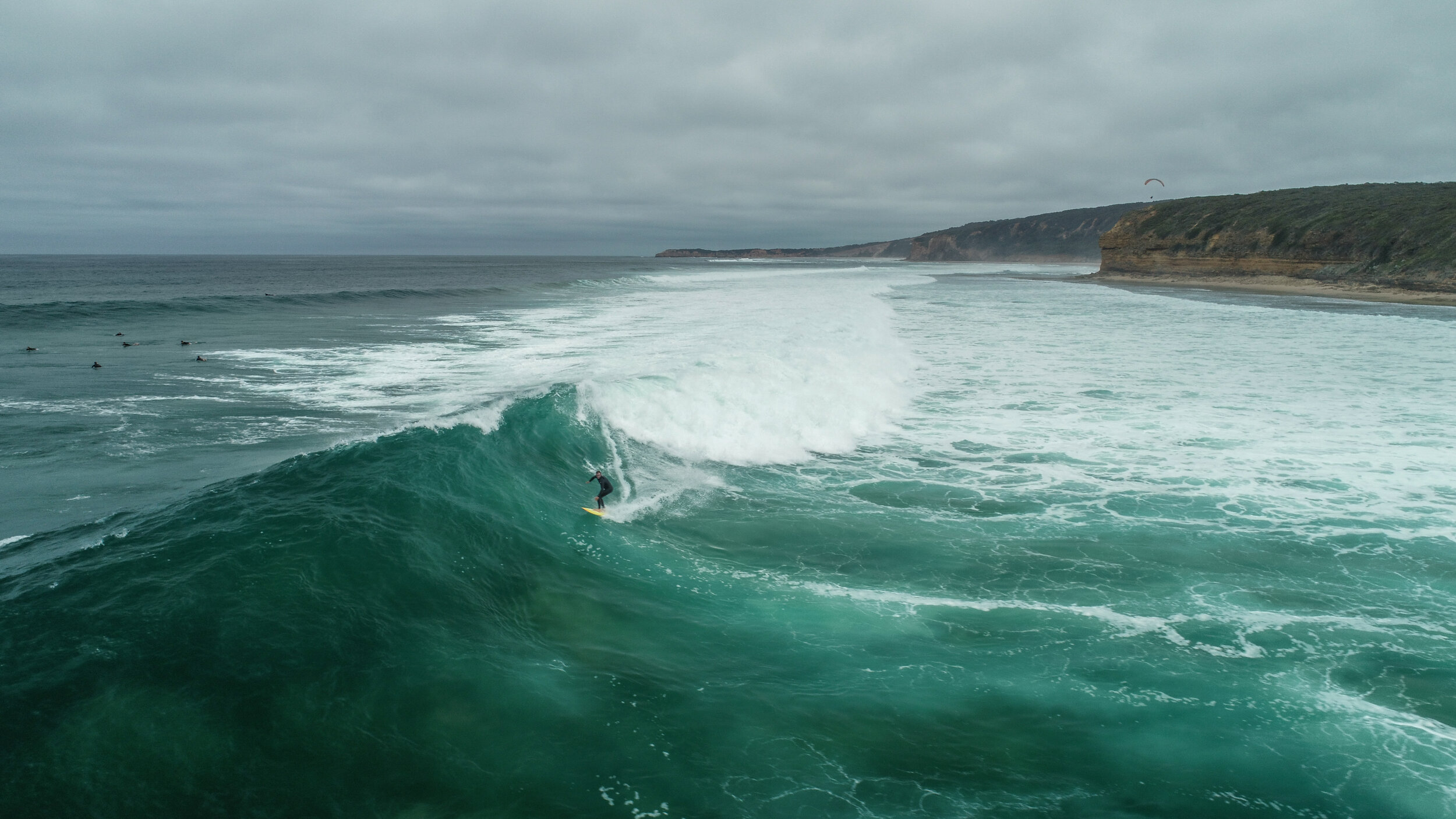
you may also like:

